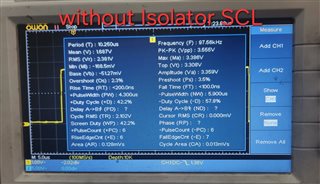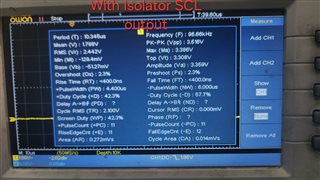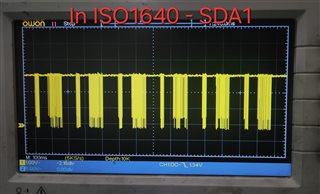Other Parts Discussed in Thread: ISO1640, , TCA9517A
Tool/software:
Dear TI Expert,
we are communicating BQ7695202 BQ IC with microcontroller STM32G0B1RET6 using ISO1640 I2C Isolator.
we are attaching following details:
1. waveform without ISO1640 I2C Isolator pull up resistor 1.5KR.
2. waveform with ISO1640 I2C Isolator pull up resistor 1.5KR bq7695202 side.
3. waveform with ISO1640 I2C Isolator pull up resistor 1.5KR Microcontroller side.
4. waveform with ISO1640 I2C Isolator pull up resistor 10KR bq7695202 side.
5. waveform with ISO1640 I2C Isolator pull up resistor 10KR Microcontroller side.
6. we are operate I2C at 100KHz.
as you can see data line in BQ7695202 side is shifted to 600mV from GND.
Please suggest solution for getting proper waveform
Thanks
Rahul Sharma

















